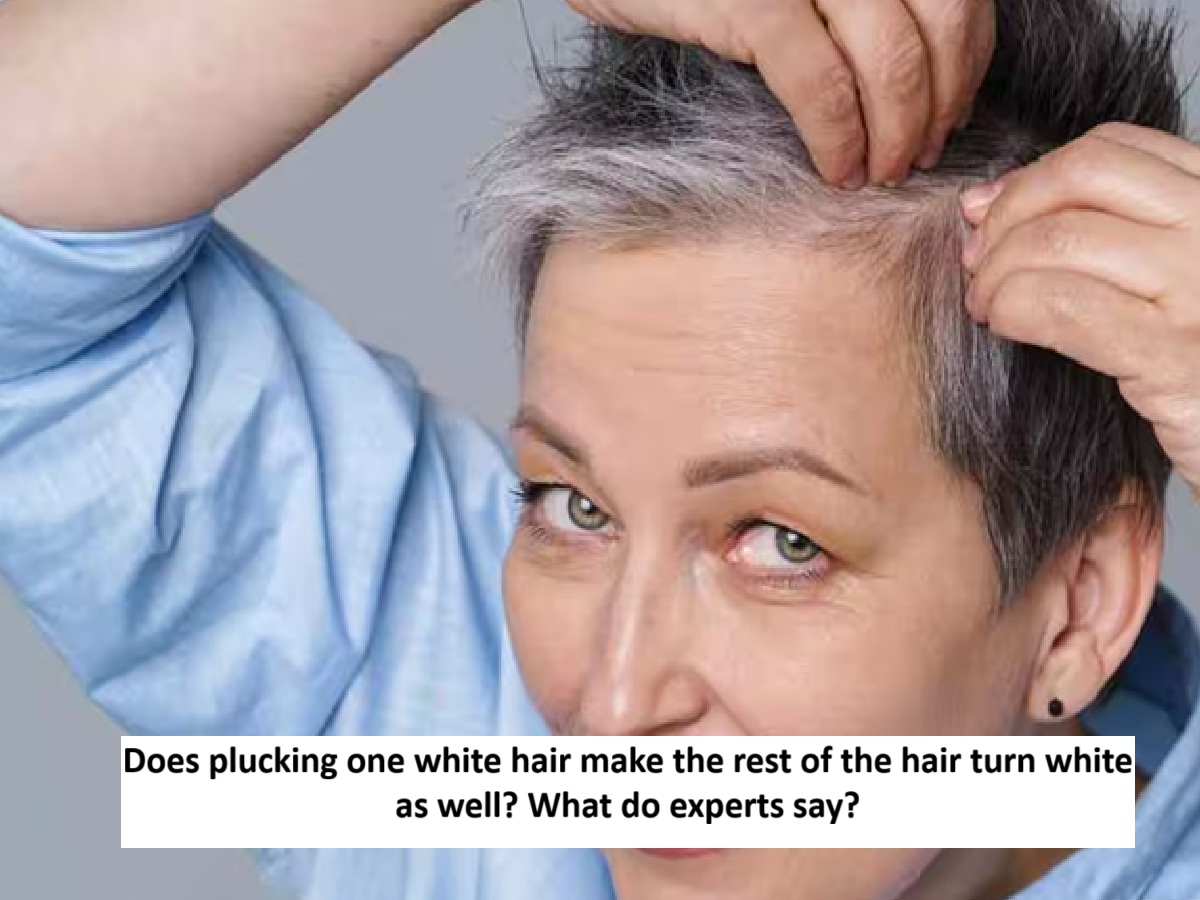
News Topical, Digital Desk : By the age of 30, almost everyone starts experiencing gray hair. Some people experience this problem even earlier, a condition known as early graying. Although gray hair doesn't diminish your beauty, many people feel uncomfortable about it. Therefore, they try to hide the first few gray hairs by plucking them. Is this really safe?
We often hear from others that if we pluck a white hair, more white hairs will start growing around it. Does this really happen? This question troubles most people. So let's find out if plucking one white hair will cause the rest of the hair to turn white as well.
Does plucking one white hair make the rest of the hair turn white too?
Plucking a gray hair doesn't cause the rest of the hair to turn gray. This is a complete myth. Skin and hair experts clearly state that plucking a single gray hair won't change the color of the rest of the hair. Each hair grows in its own root, the hair follicle, and each follicle has its own color factory called melanocytes. These melanocytes produce melanin, which makes hair appear black or brown.
When the production of melanin in a follicle decreases, white hair grows from that follicle. Therefore, plucking one white hair does not affect other follicles. Other black hair does not turn white simply because you pluck out a hair. The same hair will grow back in that place, and if that follicle no longer produces melanin, the hair will turn white again. However, plucking white hair is not considered a good idea, as it can cause many other side effects.
The real harm of plucking gray hair
1. Increased risk of infection - Repeatedly plucking hair weakens and makes the area around the follicle vulnerable and sensitive. Bacteria easily enter the area, causing redness, swelling, pain, and pimple-like rashes. Doing this for a long time can even infect and damage the follicle.
2. Ingrown hair problem - When you pull out a hair forcefully, it can sometimes change the direction of hair growth. This causes the new hair to curl back into the skin instead of coming out, which can cause a red bump, itching, pain, and irritation. This is called an ingrown hair.
3. Scalp irritation and burning - Repeated hair pulling can injure the skin in that area. People with sensitive skin may experience itching, stinging, and redness more often.
4. Hyperpigmentation and scarring - Some people develop scars or dark marks from repeated hair plucking. Pressure on the follicles can increase skin pigmentation.
5. Reduced hair growth due to weakened follicles - Constant pulling can weaken the follicles to the point where hair growth slows down or even stops. This can lead to patchy hair growth.
How to take proper care of grey hair?
1. Moisturize your hair well – White or gray hair tends to be drier than normal hair, so use moisturizing shampoo, conditioner, hair serum, coconut or olive oil.
2. Protect yourself from the sun - Strong sunlight can make your hair look even more damaged. So, use a scarf, cap, or UV protection spray.
3. Get trimmed from time to time – Trimming reduces split ends, improves structure, and makes hair soft and look good.
4. Get Nutrients - Certain nutrients are essential for hair color and strength, such as vitamin B12, vitamin E, iron, omega-3 fatty acids, and protein. These help strengthen hair and reduce hair loss.
Read More: Is vitamin B12 deficiency causing your wobbly legs? These 3 soups can provide instant relief.
--Advertisement--

 Share
Share



